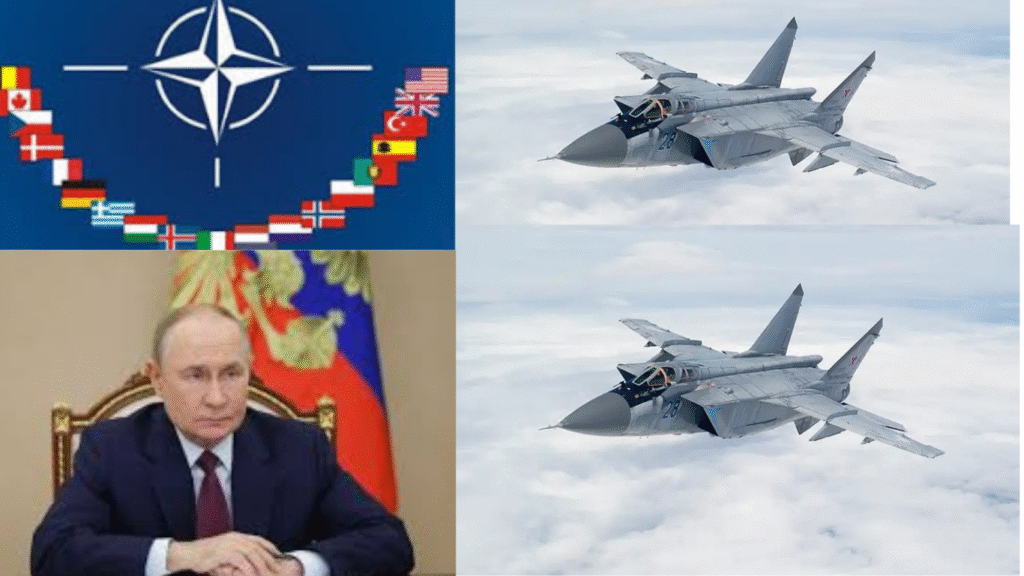
Estonia’s recent participation in NATO discussions regarding Russia’s MiG-31 aircraft capabilities has highlighted growing tensions in the Baltic region and the alliance’s commitment to collective defense. This comprehensive analysis examines the strategic implications, technical capabilities, and diplomatic ramifications of Estonia’s position within NATO’s broader security framework.
Baltic Security Dynamics and the MiG-31 Challenge
Estonia’s Strategic Position in NATO Defense
Estonia, as one of NATO’s most vulnerable frontline states, has consistently raised concerns about Russian military capabilities in the Baltic region. The country’s 183-mile border with Russia and its strategic position overlooking the Gulf of Finland make it particularly sensitive to changes in Russian air power projection. The MiG-31 Foxhound, Russia’s supersonic interceptor aircraft, represents a significant capability that directly impacts Baltic airspace security.
The MiG-31’s operational characteristics include a maximum speed exceeding Mach 2.8, advanced radar systems capable of tracking multiple targets simultaneously, and the ability to carry long-range air-to-air missiles. These capabilities enable Russia to project power deep into NATO airspace from bases within Russian territory, creating strategic challenges for Baltic defense planning.
NATO’s Article 5 Commitments and Estonian Concerns
During recent NATO conferences, Estonian representatives have emphasized the need for enhanced air defense systems specifically designed to counter advanced Russian aircraft like the MiG-31. The debate centers on whether current NATO air policing missions in the Baltic states provide adequate deterrence against sophisticated Russian air assets.
Estonia’s position reflects broader concerns among Baltic NATO members about the credibility of collective defense guarantees. The MiG-31’s ability to operate at high altitudes and speeds while carrying advanced weaponry poses unique challenges to traditional air defense systems deployed in the region.
Technical Analysis: MiG-31 Capabilities and NATO Countermeasures
Advanced Radar and Weapons Systems
The MiG-31 Foxhound incorporates the Zaslon-M radar system, one of the most powerful fighter-mounted radars ever developed. This system can simultaneously track up to 24 targets while engaging eight, providing Russia with significant situational awareness advantages over the Baltic region. The aircraft’s ability to carry R-37M long-range air-to-air missiles extends Russia’s engagement envelope well beyond traditional fighter aircraft ranges.
Operational Range and Strategic Implications
With an operational radius exceeding 1,400 kilometers, MiG-31 aircraft based in Kaliningrad or northwestern Russia can effectively patrol the entire Baltic Sea region. This capability allows Russia to maintain persistent air presence without violating NATO airspace while still projecting power and gathering intelligence on NATO activities.
NATO’s Technological Response
In response to these capabilities, NATO has deployed various countermeasures, including advanced surface-to-air missile systems and enhanced radar coverage throughout the Baltic states. The alliance has also increased the frequency and sophistication of air policing missions, rotating advanced fighter aircraft through Baltic airbases.
Diplomatic Dimensions of the Estonia-NATO Debate
Coalition Building Within NATO
Estonia’s approach to the MiG-31 discussion has involved building coalitions with other frontline NATO states, particularly Latvia, Lithuania, and Poland. These countries share similar vulnerabilities to Russian air power projection and have supported Estonia’s calls for enhanced defensive capabilities.
The diplomatic strategy employed by Estonia focuses on framing the MiG-31 threat within broader NATO security concerns, emphasizing how Russian air capabilities affect alliance-wide deterrence credibility. This approach has proven effective in garnering support from larger NATO members who may not face direct threats from Russian aircraft.
Burden Sharing and Defense Investment
Central to the NATO conference debates has been the question of burden sharing for enhanced air defense systems. Estonia has argued that smaller Baltic states cannot independently counter advanced threats like the MiG-31, requiring collective NATO investment in regional defense infrastructure.
Congressional and Parliamentary Support
Estonian parliamentary representatives have coordinated with counterparts in other NATO countries to build legislative support for enhanced Baltic air defense. This multi-level diplomatic approach has helped maintain momentum for defense improvements despite competing priorities within the alliance.
Strategic Implications for Baltic Security
Regional Defense Architecture
The MiG-31 debate has catalyzed broader discussions about Baltic defense architecture, including the integration of land, sea, and air defense systems. Estonia has advocated for a comprehensive approach that addresses not only aircraft threats but also missiles, drones, and other airborne systems that could exploit gaps in current defenses.
Intelligence Sharing and Early Warning
Enhanced intelligence sharing regarding MiG-31 operations has become a priority for Estonia within NATO frameworks. The country has invested in radar and electronic intelligence capabilities that contribute to alliance-wide situational awareness regarding Russian air activities.
Training and Readiness Standards
Estonia has used the MiG-31 discussions to advocate for enhanced training standards and readiness requirements for NATO air defense personnel. These improvements ensure that alliance forces can effectively respond to advanced threats using sophisticated equipment and tactics.
Economic and Industrial Considerations
Defense Procurement Strategies
The debate over MiG-31 countermeasures has influenced Estonian defense procurement decisions, with increased emphasis on air defense systems and radar capabilities. Estonia has coordinated these purchases with other Baltic states to achieve economies of scale and interoperability benefits.
NATO Defense Industrial Base
Estonia has advocated for strengthening NATO’s defense industrial base to ensure sustainable production of advanced air defense systems. This includes supporting research and development programs that could lead to next-generation countermeasures against aircraft like the MiG-31.
Economic Impact Assessment
The costs associated with countering advanced Russian aircraft capabilities have prompted detailed economic analyses within NATO. Estonia has contributed to these assessments by providing data on regional defense requirements and cost-effectiveness calculations for various countermeasure options.
Future Outlook and Strategic Recommendations
Evolving Threat Environment
As Russia continues to modernize its air force and develop new capabilities, Estonia anticipates that the MiG-31 debate will evolve to address emerging threats. The country has positioned itself as a thought leader within NATO regarding these developments, leveraging its frontline position to provide early warning of capability changes.
Technology Integration Opportunities
Estonia has identified opportunities to integrate civilian and military technologies to enhance air defense capabilities. These include incorporating commercial radar systems, satellite communications, and artificial intelligence applications into NATO defense networks.
Long-term Defense Planning
The MiG-31 discussions have influenced Estonia’s long-term defense planning, with increased emphasis on air and missile defense capabilities. The country has committed to maintaining defense spending levels that support these priorities while contributing to broader NATO objectives.
Conclusion
Estonia’s leadership in NATO discussions regarding Russia’s MiG-31 capabilities reflects the country’s strategic position and commitment to collective defense. The debate has highlighted the complex challenges facing Baltic security while demonstrating NATO’s ability to adapt to evolving threats through collaborative planning and resource allocation.
The ongoing dialogue between Estonia and its NATO allies regarding MiG-31 countermeasures represents a broader evolution in alliance thinking about regional defense requirements. As threats continue to evolve, Estonia’s proactive approach to identifying and addressing these challenges will remain crucial to maintaining deterrence and security in the Baltic region.
The success of Estonia’s diplomatic efforts in raising awareness of the MiG-31 threat demonstrates the importance of frontline states in shaping NATO policy. Through continued engagement and strategic communication, Estonia has positioned itself as an influential voice in alliance discussions about adapting to 21st-century security challenges.


